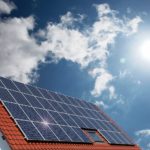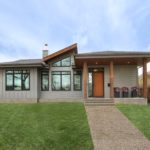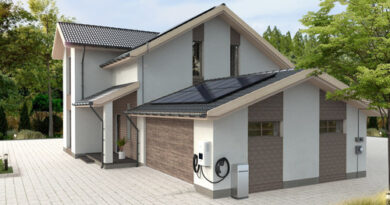New Builds #3: Choosing the right building materials and insulation to save decades of dollars – CBC.ca
Energy Disrupter
Josh Silver wants Islanders who are building new houses to know the right questions to ask their contractor or carpenter when it comes to energy efficiency savings.
That includes the latest on building materials and insulation that could save decades of dollars.
Silver is a carpenter, as well as an instructor at Holland College, and has been taking CBC P.E.I. along on his personal quest to make improvements at his 12-year-old Charlottetown home, to save energy and money.
This summer, he is focusing on new home construction.
One of the key focal points, said Silver, is ensuring a new home is well-insulated during construction, rather than having to go back and retrofit later.
That includes adding extra layers of insulation underneath the exterior of a new home.
“This is a great opportunity to look at how a house is built, and I guess more importantly, how it’s built energy efficiently, from the ground up,” Silver said.
“You’re going to see insulation and energy-efficient thought, right through to the end of the project.”

Insulation decisions
One of those insulation decisions will come early in the construction process.
“The insulation along the exterior, that’s going to help stop thermal bridging,” said Nic Cahill, an energy efficiency consultant with Greenfoot Energy Solutions.
“Thermal bridging is when heat can find its way through a weak point in the insulation, through a stud directly to the outside. So by putting a layer of rigid insulation, we’re going to cut that thermal break.”
Cahill said many new homes are also being built using structural insulated panels, rather than just sheathing,
“You have insulation combined with the sheathing, so you get the structural integrity and insulation value all in one product,” he said.
“If you’re putting out the sheathing anyway, the labour is going to be the same, whether you’re putting up sheathing or sheathing with insulation.”
Insulated building blocks
Insulating or insulated concrete forms, known as ICF, are another building material that will improve energy efficiency in a new build.
Silver said one of the nicknames for it is Lego, like the toy blocks.
“They’re basically just blocks that you stack them together, make a wall out of it,” he said.
“There’s a void in the middle of that wall and we fill it full of concrete, so very structurally sound and very high insulation.”
Heat recovery ventilators
Cahill said there are also opportunities to build in energy savings through heat recovery ventilators.
“As homes get tighter and tighter and more energy-efficient, the need for mechanical ventilation increases,” Cahill said.
“So you need to allow the home to breathe, and need to allow fresh air into the home and stale air to get out of the home.”
Cahill said heat recovery ventilators are an important part of that, taking air out of bathrooms and putting air into living spaces to improve air quality.
He said it’s important to consider the benefits of insulated flex duct, versus uninsulated.
“A lot of the ductwork is going to be run through the attic, so if you have warm air running through this ductwork, you’re going to get a lot of heat that’s lost into the attic,” Cahill said.
“When you have that insulation layer around it, you’re not going to lose as much heat into that attic. So that’s why this is important in these kind of applications.”
Saving money
Cahill is a graduate of the energy systems engineering technology program at Holland College.
He said he has seen an explosion of interest in home energy efficiency since he finished the program, and expects that trend to continue.
“Everyone knows it’s getting more and more expensive to heat your house, and everyone wants to be able to save money,” Cahill said.
“There’s a lot of new rebate programs coming out from the provincial and the federal government that people are taking advantage of. There’s been more interest now than ever in energy efficiency,” Cahill said.
“I can’t really see things slowing down anytime soon.”
More from CBC P.E.I.
Original Source: https://www.cbc.ca/news/canada/prince-edward-island/pei-new-build-energy-savings-part-three-1.6103771
















